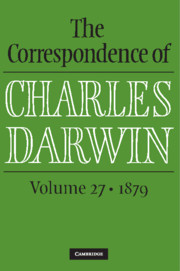Refine search
Actions for selected content:
10306 results in History of science: general interest
Part II - St Anthony the Abbot, Thaumaturge of the Burning Disease, and the Order of the Hospital Brothers of St Anthony
-
- Book:
- Saint Anthony's Fire from Antiquity to the Eighteenth Century
- Published by:
- Amsterdam University Press
- Published online:
- 21 November 2020
- Print publication:
- 14 November 2019, pp 125-184
-
- Chapter
- Export citation
Contents
-
- Book:
- Saint Anthony's Fire from Antiquity to the Eighteenth Century
- Published by:
- Amsterdam University Press
- Published online:
- 21 November 2020
- Print publication:
- 14 November 2019, pp 5-6
-
- Chapter
- Export citation
Index
-
- Book:
- Saint Anthony's Fire from Antiquity to the Eighteenth Century
- Published by:
- Amsterdam University Press
- Published online:
- 21 November 2020
- Print publication:
- 14 November 2019, pp 259-264
-
- Chapter
- Export citation
Introduction
-
- Book:
- Saint Anthony's Fire from Antiquity to the Eighteenth Century
- Published by:
- Amsterdam University Press
- Published online:
- 21 November 2020
- Print publication:
- 14 November 2019, pp 15-32
-
- Chapter
- Export citation
About the Author
-
- Book:
- Saint Anthony's Fire from Antiquity to the Eighteenth Century
- Published by:
- Amsterdam University Press
- Published online:
- 21 November 2020
- Print publication:
- 14 November 2019, pp 257-258
-
- Chapter
- Export citation
Part III - The Discovery of Ergotism (Saint Anthony's Fire?)
-
- Book:
- Saint Anthony's Fire from Antiquity to the Eighteenth Century
- Published by:
- Amsterdam University Press
- Published online:
- 21 November 2020
- Print publication:
- 14 November 2019, pp 185-216
-
- Chapter
- Export citation
Bibliography
-
- Book:
- Saint Anthony's Fire from Antiquity to the Eighteenth Century
- Published by:
- Amsterdam University Press
- Published online:
- 21 November 2020
- Print publication:
- 14 November 2019, pp 221-256
-
- Chapter
- Export citation
Part I - The Burning Disease: Different Names for the Same Disease or Different Diseases with the Same Name?
-
- Book:
- Saint Anthony's Fire from Antiquity to the Eighteenth Century
- Published by:
- Amsterdam University Press
- Published online:
- 21 November 2020
- Print publication:
- 14 November 2019, pp 33-124
-
- Chapter
- Export citation
Retrospectives: Unconventional paths
-
- Journal:
- The British Journal for the History of Science / Volume 52 / Issue 4 / December 2019
- Published online by Cambridge University Press:
- 13 November 2019, pp. 696-706
- Print publication:
- December 2019
-
- Article
- Export citation

The Correspondence of Charles Darwin
-
- Published online:
- 07 November 2019
- Print publication:
- 21 November 2019
‘A new and hopeful type of social organism’: Julian Huxley, J.G. Crowther and Lancelot Hogben on Roosevelt's New Deal
-
- Journal:
- The British Journal for the History of Science / Volume 52 / Issue 4 / December 2019
- Published online by Cambridge University Press:
- 22 October 2019, pp. 645-671
- Print publication:
- December 2019
-
- Article
- Export citation
Abbreviations
-
- Book:
- Physics and Psychics
- Published online:
- 27 September 2019
- Print publication:
- 17 October 2019, pp xv-xvi
-
- Chapter
- Export citation
3 - Physical Theories and Psychical Effects
-
- Book:
- Physics and Psychics
- Published online:
- 27 September 2019
- Print publication:
- 17 October 2019, pp 137-184
-
- Chapter
- Export citation
6 - Modernising Physics and Psychics
-
- Book:
- Physics and Psychics
- Published online:
- 27 September 2019
- Print publication:
- 17 October 2019, pp 281-327
-
- Chapter
- Export citation
Copyright page
-
- Book:
- Physics and Psychics
- Published online:
- 27 September 2019
- Print publication:
- 17 October 2019, pp iv-iv
-
- Chapter
- Export citation
Conclusion
-
- Book:
- Physics and Psychics
- Published online:
- 27 September 2019
- Print publication:
- 17 October 2019, pp 328-338
-
- Chapter
- Export citation
Acknowledgements
-
- Book:
- Physics and Psychics
- Published online:
- 27 September 2019
- Print publication:
- 17 October 2019, pp xi-xiv
-
- Chapter
- Export citation
2 - A Survey of Physical–Psychical Scientists
-
- Book:
- Physics and Psychics
- Published online:
- 27 September 2019
- Print publication:
- 17 October 2019, pp 76-136
-
- Chapter
- Export citation
4 - Psychical Investigation as Experimental Physics
-
- Book:
- Physics and Psychics
- Published online:
- 27 September 2019
- Print publication:
- 17 October 2019, pp 185-237
-
- Chapter
- Export citation
Dedication
-
- Book:
- Physics and Psychics
- Published online:
- 27 September 2019
- Print publication:
- 17 October 2019, pp v-vi
-
- Chapter
- Export citation
